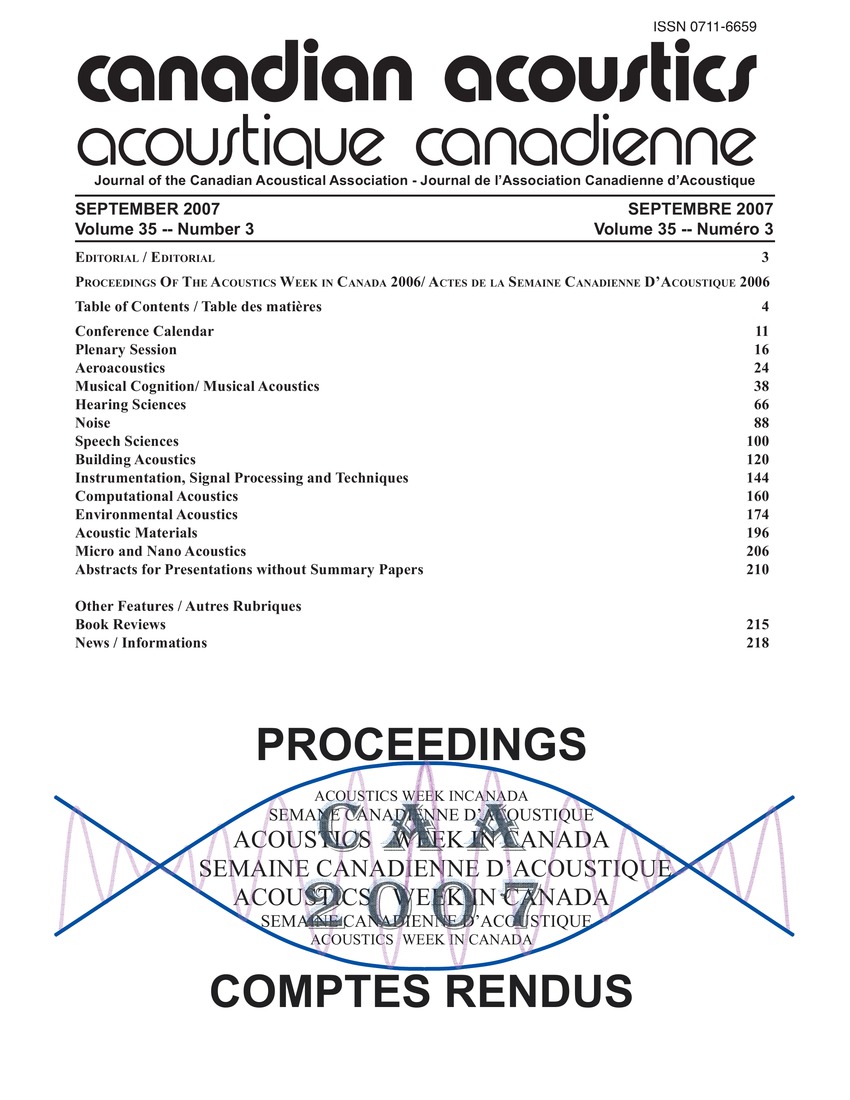Psycho-acoustic experiments on the sensory consonance of musical two-tones
Mots-clés :
Biological membranes, Sensory perception, Basilar membrane, Consonance curves, Helmholtz theoryRésumé
The sensory consonance of two-tones composed of two harmonic complex tones similar to vibrato-less bowedstring tones are studied. In previous sensory-consonance experiments with bowed-string-like tones, it was found that the consonance curve forms narrow peaks at small-integer ratios. The ranking order of the seven two-tones obtained by an attitude scale construction was equal to that of the seven mean point numbers. The consonance curves for two simultaneous bowed-string-like harmonic complex tones form narrow peaks. The R-values of the peaks agree with the Helmholtz consonance theory that is considered to be rates of partial tones in a certain range. The relative heights of the consonance peaks become more understandable by considering Helmholtz theory if there are no or few wide gaps in the excitation pattern caused by the partial tones on the basilar membrane in the inner ear.Fichiers supplémentaires
Publié-e
Comment citer
Numéro
Rubrique
Licence
Author Licensing Addendum
This Licensing Addendum ("Addendum") is entered into between the undersigned Author(s) and Canadian Acoustics journal published by the Canadian Acoustical Association (hereinafter referred to as the "Publisher"). The Author(s) and the Publisher agree as follows:
-
Retained Rights: The Author(s) retain(s) the following rights:
- The right to reproduce, distribute, and publicly display the Work on the Author's personal website or the website of the Author's institution.
- The right to use the Work in the Author's teaching activities and presentations.
- The right to include the Work in a compilation for the Author's personal use, not for sale.
-
Grant of License: The Author(s) grant(s) to the Publisher a worldwide exclusive license to publish, reproduce, distribute, and display the Work in Canadian Acoustics and any other formats and media deemed appropriate by the Publisher.
-
Attribution: The Publisher agrees to include proper attribution to the Author(s) in all publications and reproductions of the Work.
-
No Conflict: This Addendum is intended to be in harmony with, and not in conflict with, the terms and conditions of the original agreement entered into between the Author(s) and the Publisher.
-
Copyright Clause: Copyright on articles is held by the Author(s). The corresponding Author has the right to grant on behalf of all Authors and does grant on behalf of all Authors, a worldwide exclusive license to the Publisher and its licensees in perpetuity, in all forms, formats, and media (whether known now or created in the future), including but not limited to the rights to publish, reproduce, distribute, display, store, translate, create adaptations, reprints, include within collections, and create summaries, extracts, and/or abstracts of the Contribution.


